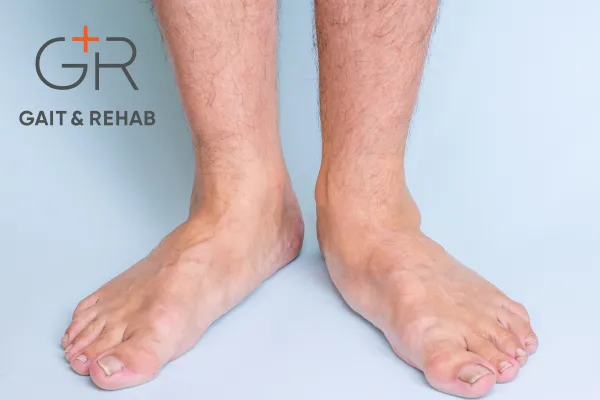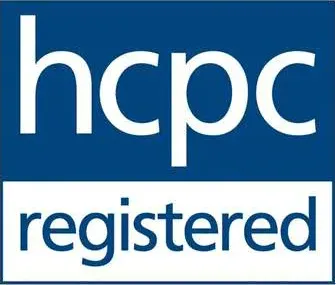
Pain and Flat Feet: What You Need to Know (and What to Do)
Pain and Flat Feet: What You Need to Know (and What to Do)
Flat feet are often misunderstood. Many people notice they have little or no visible arch and worry that something is wrong. Others experience foot pain and wonder if their arch (or lack of one) is to blame. At Gait and Rehab podiatry clinic in Knowle, we see patients with all types of foot postures, and the truth is, not all flat feet are problematic.
In this blog, we break down what flat feet actually are, how they present during walking, and most importantly, when it’s time to seek help.
What Are Flat Feet?
Flat feet, also known as pes planus, occur when the arch of the foot flattens out and comes into contact with the ground. This can be:
Flexible: The arch appears when non-weight bearing but flattens under load.
Rigid: The arch is absent both standing and sitting, often due to structural or neurological causes.
Acquired: The arch has collapsed over time, often due to issues like posterior tibial tendon dysfunction (PTTD), injury, arthritis, or ageing.
Some people are born with flat feet and never experience any problems. For others, flat feet develop over time and start to cause discomfort. The key is understanding when a flat foot becomes a painful foot.
How Flat Feet Present When You Walk
Your feet play a major role in how your body moves. When your arches are lower than average or completely collapsed it can influence your gait (walking pattern), leading to compensations higher up the chain.
Here’s how it might look:
Slower push-off: Flat feet often lack the springy “propulsive” function of the arch, so walking may feel heavy, laboured, or inefficient.
Foot fatigue: Because the foot's natural shock-absorbing structure is compromised, muscles and tendons may work harder to stabilise the body — especially during prolonged standing or activity.
Over time, this can lead to:
Heel or arch pain (including plantar fasciitis)
Ankle discomfort or instability
Shin splints or knee pain
Pain in the hips or lower back
Posterior tibial tendon dysfunction (a key structure that helps support the arch)
Not All Flat Feet Are Pathological
Having flat feet does not automatically mean you need treatment. Many people with low arches function completely normally with no pain, no injury, and no need for support. The issue arises when symptoms develop or the structure continues to collapse, altering gait or causing secondary problems.
What matters most is not the appearance of your arch it’s how your foot behaves under load and how your body adapts.
At Gait and Rehab, we focus on function first. If you’re pain-free, active, and not at risk of future issues, we’ll keep things simple. If your flat feet are causing you discomfort or stopping you from living fully that’s where we come in.
What Can Be Done?
If you’re starting to experience foot pain, instability, or fatigue especially around the arch, ankle, or heel it’s worth getting assessed. Here’s how we help:
1. Gait Analysis
We use pressure mapping and gait scanning technology to assess how your foot loads during walking. This helps us identify areas of high pressure, delayed propulsion, or overcompensation, and guides treatment.
2. Footwear Advice
Often, the wrong shoes are half the problem. We’ll help you choose supportive, well-fitted footwear that matches your foot shape and activity level.
3. Bespoke Orthotics
If needed, we can design custom-made orthotics to support the arch, reduce strain, and correct the foot’s position during walking. This is especially helpful if your flat feet are due to muscle imbalance or tendon dysfunction.
Our orthotics are tailored using gait and pressure data, with features like:
Medial arch support to reduce pronation
Heel cupping to improve alignment
Offloading zones for sore areas
Rocker soles to reduce time spent on painful parts of the foot
4. Exercise Rehabilitation
Strengthening and stretching specific muscle groups like the tibialis posterior and intrinsic foot muscles can improve foot posture and reduce symptoms. We’ll provide you with a tailored home programme, complete with video guidance, to build foot strength and stability.
5. Referral When Needed
If your symptoms suggest a more complex cause such as significant tendon dysfunction, arthritis, or neurological involvement we can refer you to the right specialists for imaging or further investigations.
When Should You Seek Help?
Consider booking an assessment if:
You’ve started to develop pain in your arches, heels, ankles, knees, or hips
You feel unstable or fatigued after walking or standing
Your foot posture seems to be changing
You’re recovering from an injury and struggling to return to activity
You’ve had previous foot problems and want to prevent recurrence
The Bottom Line
Flat feet aren’t automatically a problem but when pain appears, it's your body’s way of telling you something’s not quite right. The sooner you address it, the easier it is to correct and manage.
At Gait and Rehab, we take a holistic, data-led approach to foot and lower limb care. Whether you need reassurance, support, or a comprehensive treatment plan, we’re here to help you move better and feel better.




